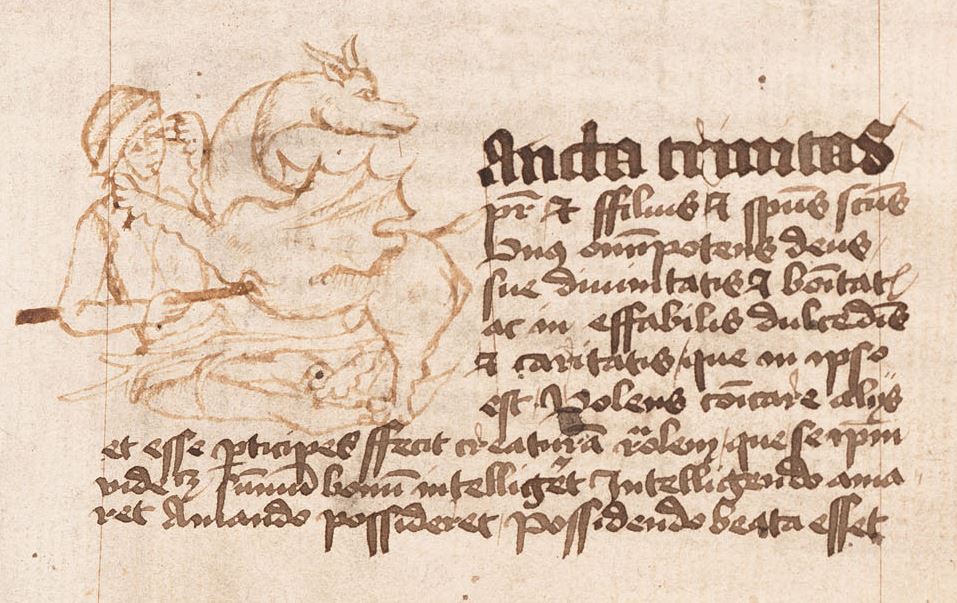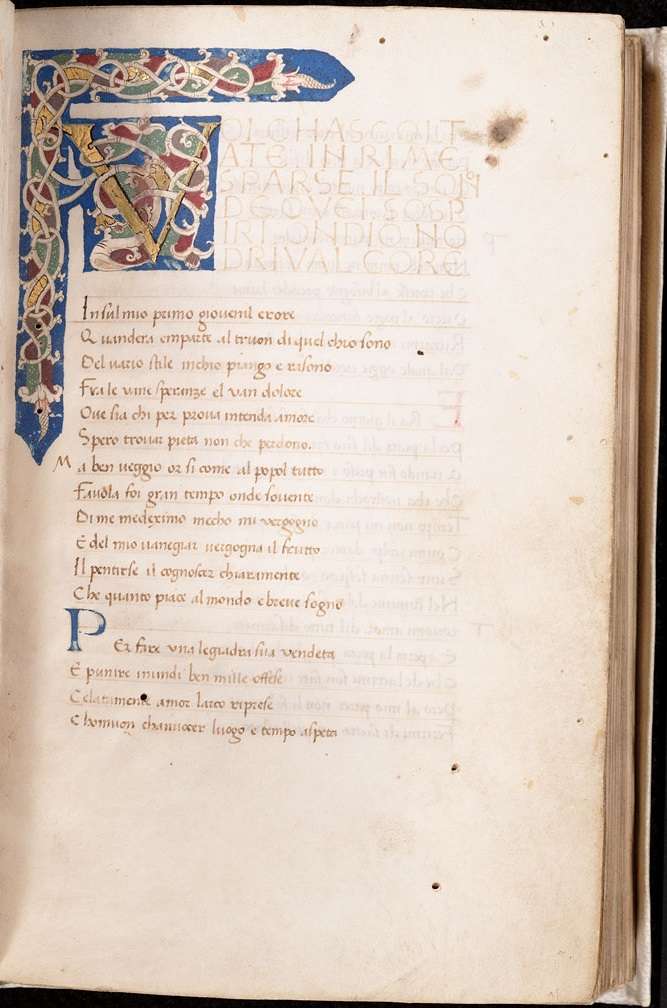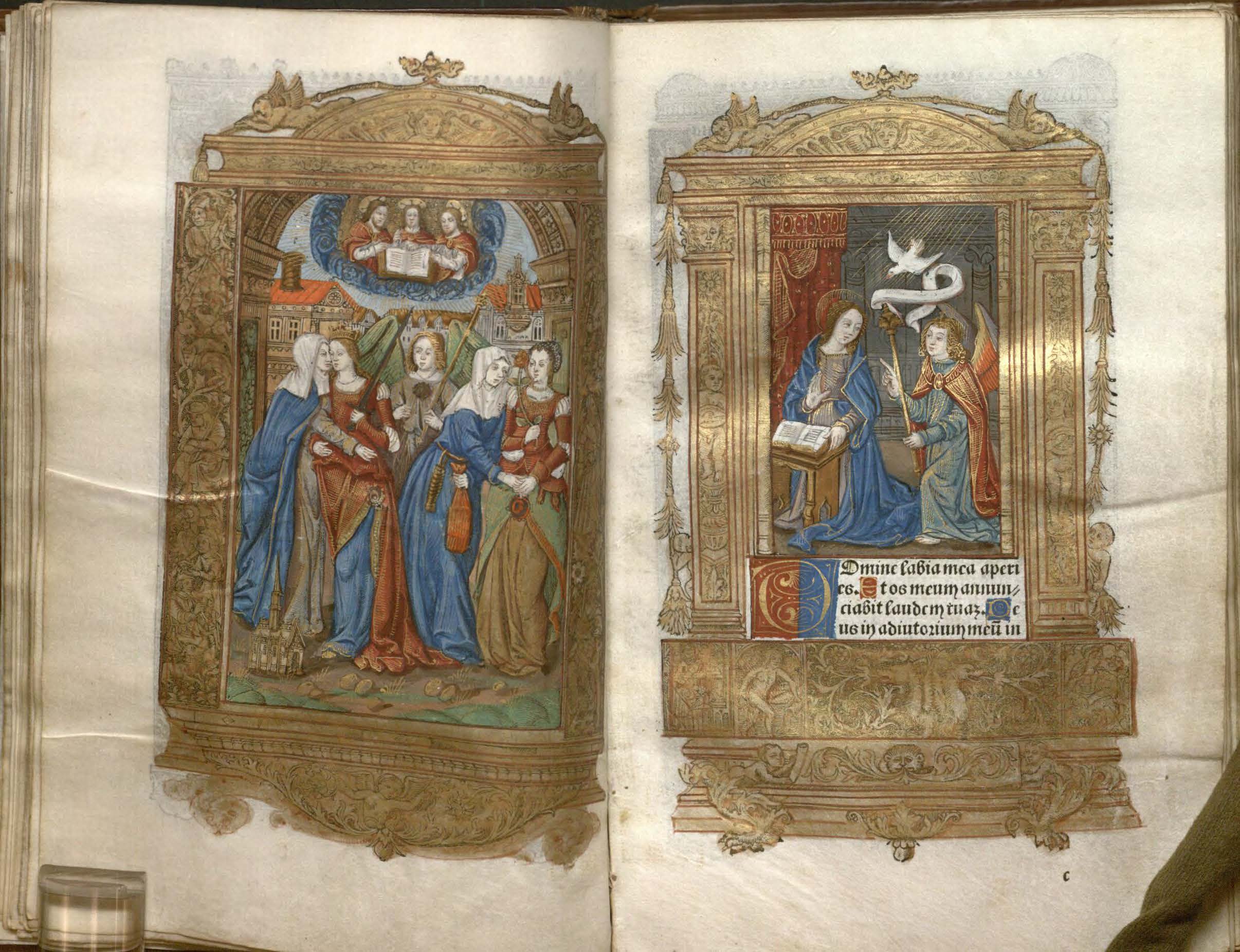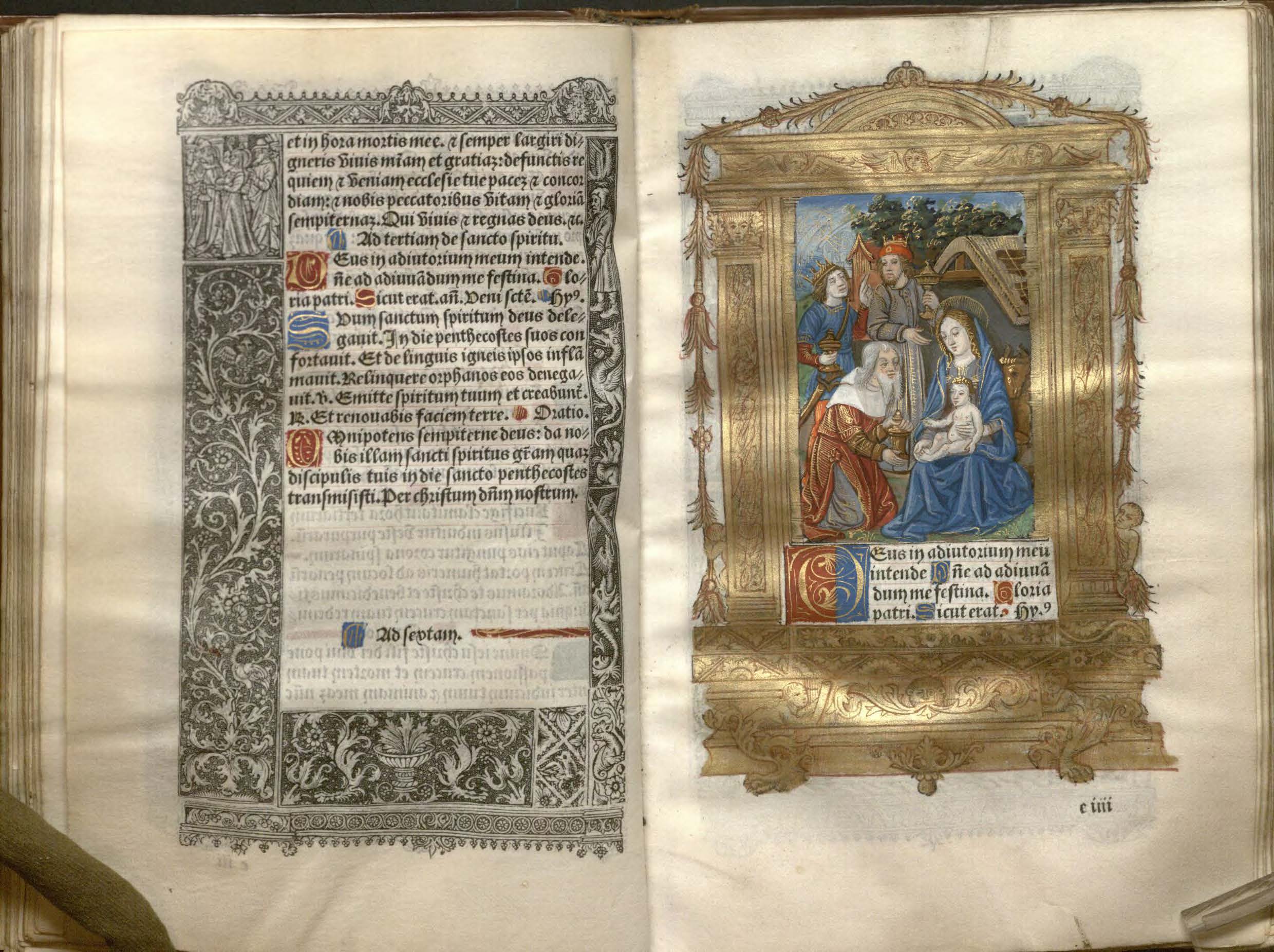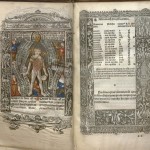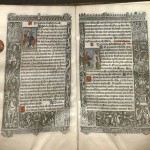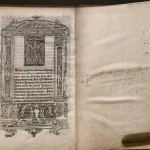Manuscript Monday: Four from the 1400s
November 24th, 2014Earlier this month Mitch Fraas at the University of Pennsylvania wrote a fascinating blog post in which he mapped data from Melissa Conway and Lisa Fagin Davis’s Directory of Institutions in the United States and Canada with Pre-1600 Manuscript Holdings (2014). Though, as Fraas notes, that the highest institutional concentrations of medieval and early modern manuscripts are found on the East and West Coasts, KU is responsible for one of the largest dots on the map in the middle of the country. In fact, the Kenneth Spencer Research Library ranks among the top fifteen institutions for holdings of pre-1600 manuscript codices (volumes), with its approximately 220 manuscript books, and fares even better when our over 2100 pre-1600 manuscript leaves, documents, and rolls are taken into account.
In light of these numbers, this week we’re highlighting four fifteenth-century manuscripts, each from a different country. Medievalists and early modern scholars take note; it’s worth making a stop in Lawrence, KS!
1. Vosper Book of Hours
Detail from the miniature of David in prayer (f. 83r) from the Vosper Book of Hours, France, ca. 1470.
Call #: MS Pryce C1. Click image to view full page.
Spencer’s most ornately decorated manuscript is a late-fifteenth-century book of hours from Eastern France. Named in honor of Robert Vosper (1913-1994), a former director of KU Libraries, this devotional volume includes seventeen large miniatures (or paintings), as well as stunning foliate borders, featuring birds and insects. In the image above, the darkish, opaque wings of the dragonfly are actually silver which has tarnished with time.
2. Minden Codex
Detail from: Gallus’s Malogranatum (folio 2r), one of several texts in the Minden Codex. Germany, mid-to-late 15th century.
Call #: MS C164. Click Image to view full page.
The Minden Codex received its name from our catalogers because it once belonged to a Benedictine monastery in Minden, a city in the Westphalia region of Germany. It is a collection of more than fifteen religious texts that appear to have been copied out by different scribes in the mid-to-late 1400s and then bound together alongside a fragment of printed text. The codex begins with a portion of the first book of the Malogranatum, a dialogue intended as guidance for monks striving toward the perfection of their souls. This text is sometimes attributed to Gallus, an abbot of Königssaal (near Prague). The historiated initial in the detail above depicts Saint George slaying the dragon. Look closely and you’ll see that their entwined bodies form the letter “S” of the Latin word Sancta.
3. A Collection of Italian lyric poetry; primarily Petrarch’s Canzoniere
Opening of Petrarch’s Canzoniere in a collection of Italian lyric poetry. Italy, 15th century.
Call Number: MS C24. Click image to enlarge.
Though many of Spencer’s pre-1600 codices are religious in nature, the library also holds a wide range of secular texts, including classical and scientific works, legal and estate records, histories, and works of literature. The main text in this 15th century miscellany of Italian verse is Petrarch’s Canzoniere (Songbook), a sequence of poems that tells the story of the poet’s love for “Laura.” The text begins with Petrarch’s famous sonnet, “Voi ch’ascoltate in rime sparse il sono […],” whose initial “V” is here illuminated and decorated with a white vine design. Subsequent poems in the Canzoniere receive a simpler treatment: their smaller initials appear in alternating blue and red. The manuscript book also includes poems by Jacopo Sanguinacci, Giusto de’ Conti, and others, as well as Latin sayings with Italian translations.
4. English Medicinal Recipe
Medicinal Recipe. England, ca. 1400s. (Phillipps 40717). Call #: MS P541 Click image to enlarge.
Feeling under the weather now that the temperature has dropped? This medicinal recipe dating form the 1400s provides directions for distilling a mixture of spices, herbs, and wine to treat a variety of illnesses and wounds. This single leaf, with its top three lines partly torn away, is notable in that it is one of the library’s comparatively few pre-1500 manuscripts in English (or Middle English, as the case may be). Though Spencer holds several thousand English estate documents (circa 1200-1900), including papers from the prominent North and Kaye families, those that date from before 1500 tend to be in Latin. This recipe or “receipt” stands as an instructive example of unornamented, vernacular writing. However, despite being in English, its script presents a challenge for modern eyes. Try to read a line or two and you may soon find yourself yearning for the more familiar humanist letterforms of the Canzoniere above (MS C24). Finally, this modest leaf also boasts an interesting provenance: it was once a part of the library of Sir Thomas Phillipps (1792–1872), an obsessive nineteenth-century collector who built one of the largest private collections of manuscripts.
For those who may have caught a little of Phillipps’s manuscript-mania, Spencer has plenty more to explore. You will find records (and images) for many of our medieval and early modern manuscripts in the Digital Scriptorium, an online database with holdings from a variety of institutions. To browse Spencer’s contributions, simply click on “Advanced Search,” select Lawrence, University of Kansas, Kenneth Spencer Research Library, Special Collection from the “Current Location” field and hit “Search.” Or, for a another short narrative tour, take a peek at Lisa Fagin Davis’s great post on Kansas in her Manuscript Road Trip Blog.
Elspeth Healey
Special Collections Librarian


